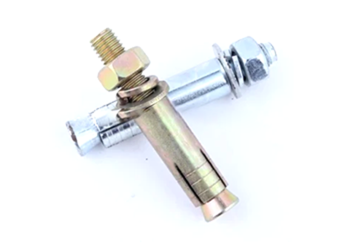Ağu . 09, 2024 01:35 Back to list
Exploring Various Categories of Screws for Construction and Mechanical Applications
Different Types of Screws An Overview
Screws are essential fasteners utilized in various applications, ranging from simple DIY projects to complex machinery. Understanding the different types of screws is crucial for selecting the right fastener for any job. In this article, we will explore the various types of screws, their characteristics, and their typical uses.
1. Wood Screws
Wood screws are specifically designed for fastening wood materials. They typically have a sharp point and coarse threads that allow them to grip the wood securely. The head is often flat or round, and they can be made from various materials, including stainless steel and brass. These screws are commonly used in furniture assembly and carpentry, where the need for strong joinery is paramount.
2. Machine Screws
Machine screws are used primarily in metal applications and can be found in machinery, appliances, and automotive components. These screws have a uniform diameter and are typically threaded the entire length of the shaft. They can be used with nuts or tapped holes, providing versatility in applications. Machine screws come in various head styles, such as flat, pan, and hex heads, making them suitable for a range of fastening needs.
As the name suggests, sheet metal screws are designed for fastening metal sheets together. They have a sharp point and are often self-tapping, meaning they can create their own threaded holes in the materials they are fastened to. Sheet metal screws are commonly used in construction and manufacturing, particularly for HVAC and roofing applications.
4. Self-Tapping Screws
different types of screws

Self-tapping screws are designed to cut their own threads as they are driven into materials. This makes them ideal for softer materials like plastic or thin metal. They are available in various designs, including those with sharp points for easier penetration. Self-tapping screws are commonly found in electronic devices and automotive assemblies where ease of installation is essential.
5. Lag Screws
Lag screws, or lag bolts, are heavy-duty fasteners used for wood applications that require significant strength. They are much larger than standard wood screws and are designed to provide a sturdy and secure joint. Lag screws are often used in construction to attach heavy beams or secure large pieces of equipment. They typically require a pre-drilled pilot hole to facilitate installation.
6. Anchor Screws
Anchor screws are designed to be used with anchors, which provide additional holding strength in materials that may not support a screw alone, such as drywall or masonry. These screws are commonly used for hanging heavy objects or fixtures. They come in various styles, including expansion anchors and toggle bolts, each suited for different types of installations.
7. Drywall Screws
Drywall screws are specifically engineered for fastening drywall to wood or metal studs. They feature a bugle-shaped head that allows for a flush finish and minimizes tearing of the drywall paper. The coarse threads provide excellent grip in wood, while the fine threads are better suited for metal.
Conclusion
Understanding the various types of screws and their specific applications is crucial for anyone involved in construction, manufacturing, or DIY projects. Each type of screw is designed with unique features that suit different materials and fastening needs. By selecting the right screw for your project, you can ensure a secure and lasting hold, which is foundational to the integrity of any construction or manufacturing endeavor. Whether you are a professional contractor or a casual DIY enthusiast, knowing these distinctions will help you achieve the best results in your projects.
-
The Ubiquitous Reach of DIN934 in Application Realms
NewsMay.16,2025
-
Exploring Different Bolt Types
NewsMay.16,2025
-
Cracking the Code of Sleeve Anchor Mastery
NewsMay.16,2025
-
Clamp Design Principles,Types and Innovations
NewsMay.16,2025
-
Artistry Inspired by the Humble Anchor Bolt
NewsMay.16,2025
-
A Deep Dive into Screw Types
NewsMay.16,2025


